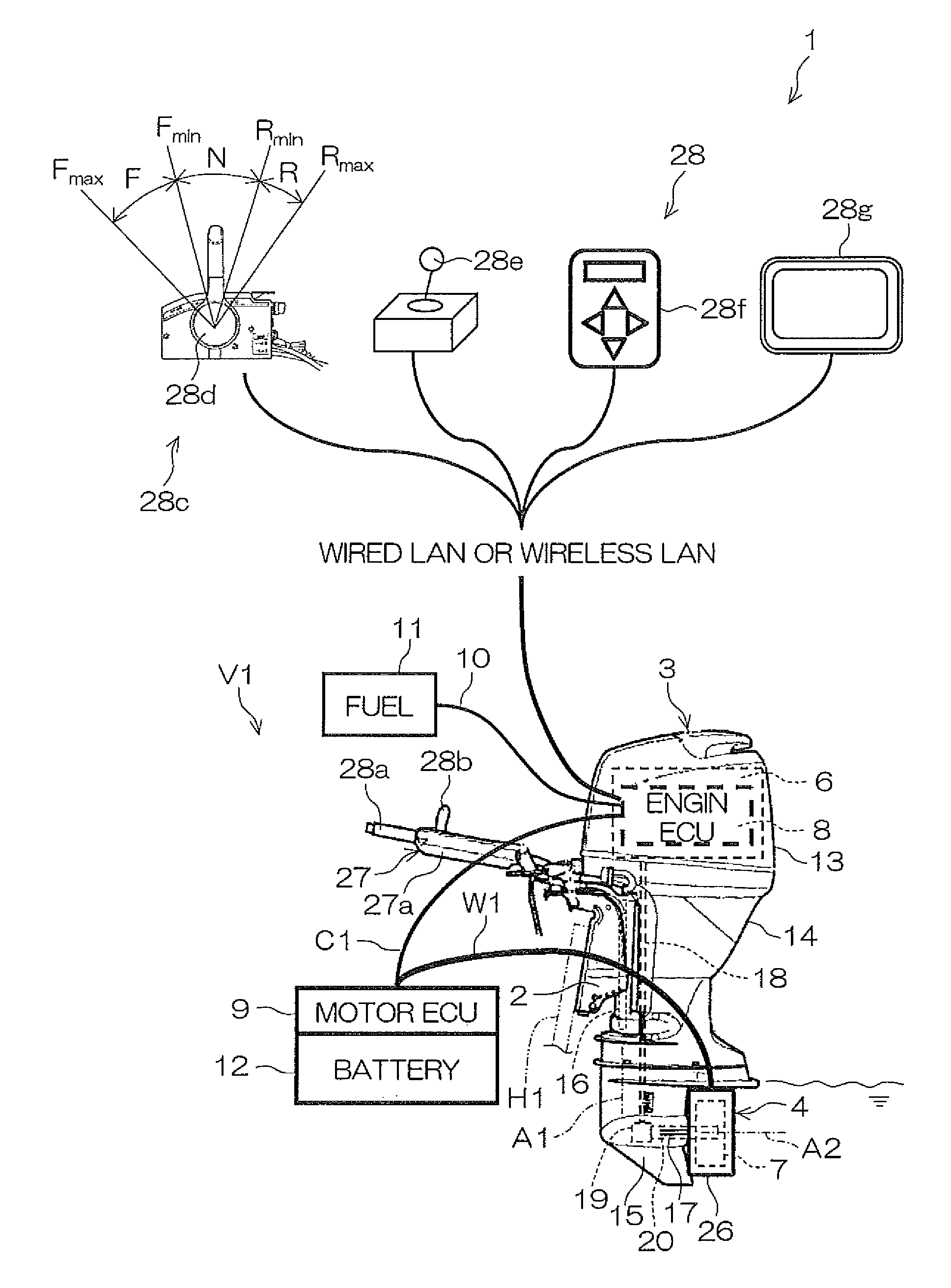Marine vessel propulsion device
a propulsion device and marine technology, applied in the direction of marine propulsion, motor-driven power plants, vessel construction, etc., can solve the problems of complex structure of the marine propulsion device, and achieve the effects of increasing the electric current generated in the power generation coil, reliable supply, and greater electrical power supplied to the stator
- Summary
- Abstract
- Description
- Claims
- Application Information
AI Technical Summary
Benefits of technology
Problems solved by technology
Method used
Image
Examples
Embodiment Construction
[0084]Propellers according to the following preferred embodiments are preferably rotatable in a normal rotation direction and in a reverse rotation direction. The normal rotation direction may be a clockwise direction (i.e., right-handed rotation direction) when the propeller is seen from behind, or may be a counterclockwise direction (i.e., left-handed rotation direction) when the propeller is seen from behind. Hereinafter, the clockwise direction of the propeller seen from behind is defined as the normal rotation direction of the propeller, and the counterclockwise direction of the propeller seen from behind is defined as the reverse rotation direction of the propeller.
[0085]FIG. 1A and FIG. 1B are side views of a marine vessel propulsion device 1 according to a first preferred embodiment of the present invention. FIG. 2 is a rear view of the marine vessel propulsion device 1 according to the first preferred embodiment of the present invention. FIG. 3 is a schematic view of a forw...
PUM
 Login to View More
Login to View More Abstract
Description
Claims
Application Information
 Login to View More
Login to View More - R&D
- Intellectual Property
- Life Sciences
- Materials
- Tech Scout
- Unparalleled Data Quality
- Higher Quality Content
- 60% Fewer Hallucinations
Browse by: Latest US Patents, China's latest patents, Technical Efficacy Thesaurus, Application Domain, Technology Topic, Popular Technical Reports.
© 2025 PatSnap. All rights reserved.Legal|Privacy policy|Modern Slavery Act Transparency Statement|Sitemap|About US| Contact US: help@patsnap.com



